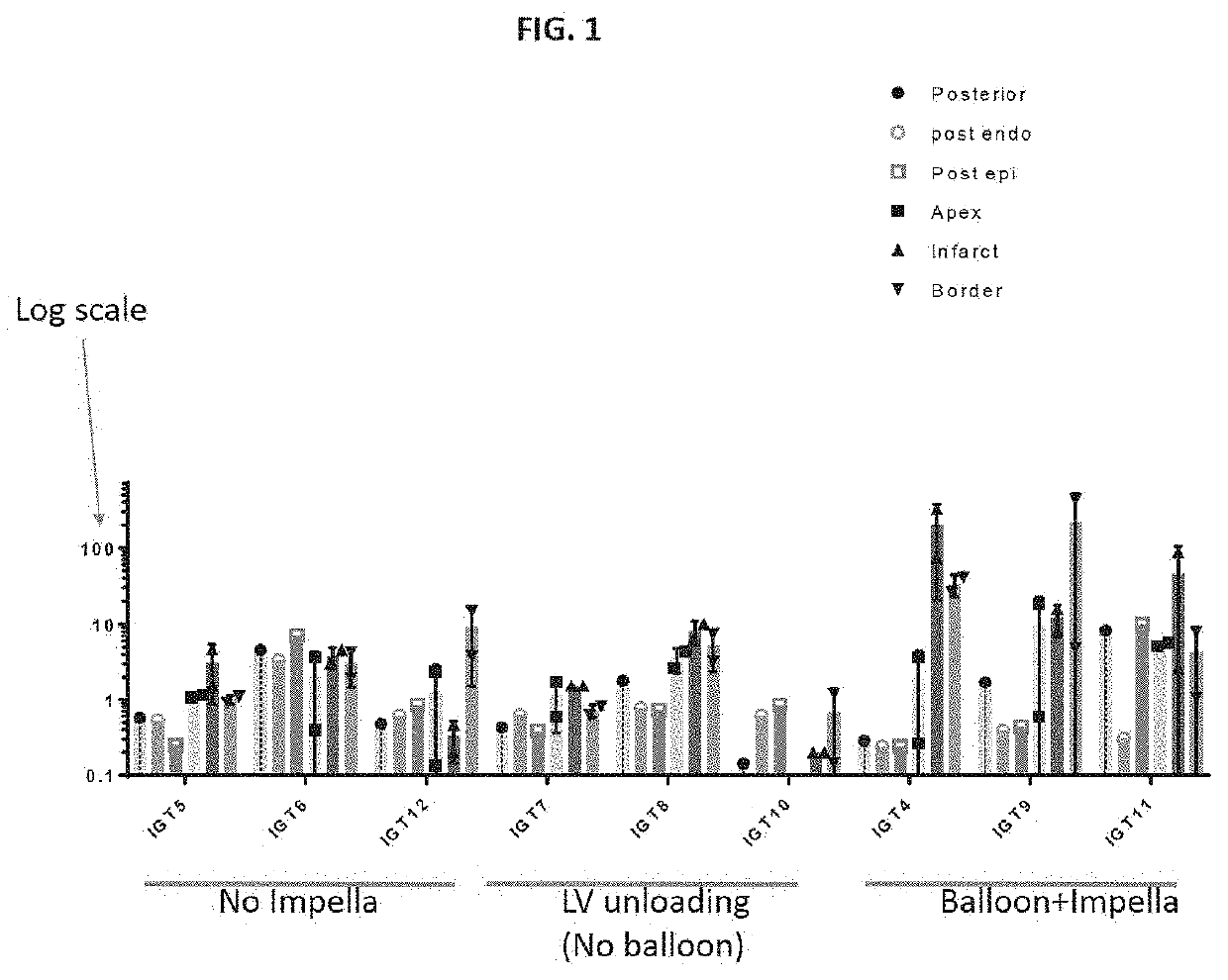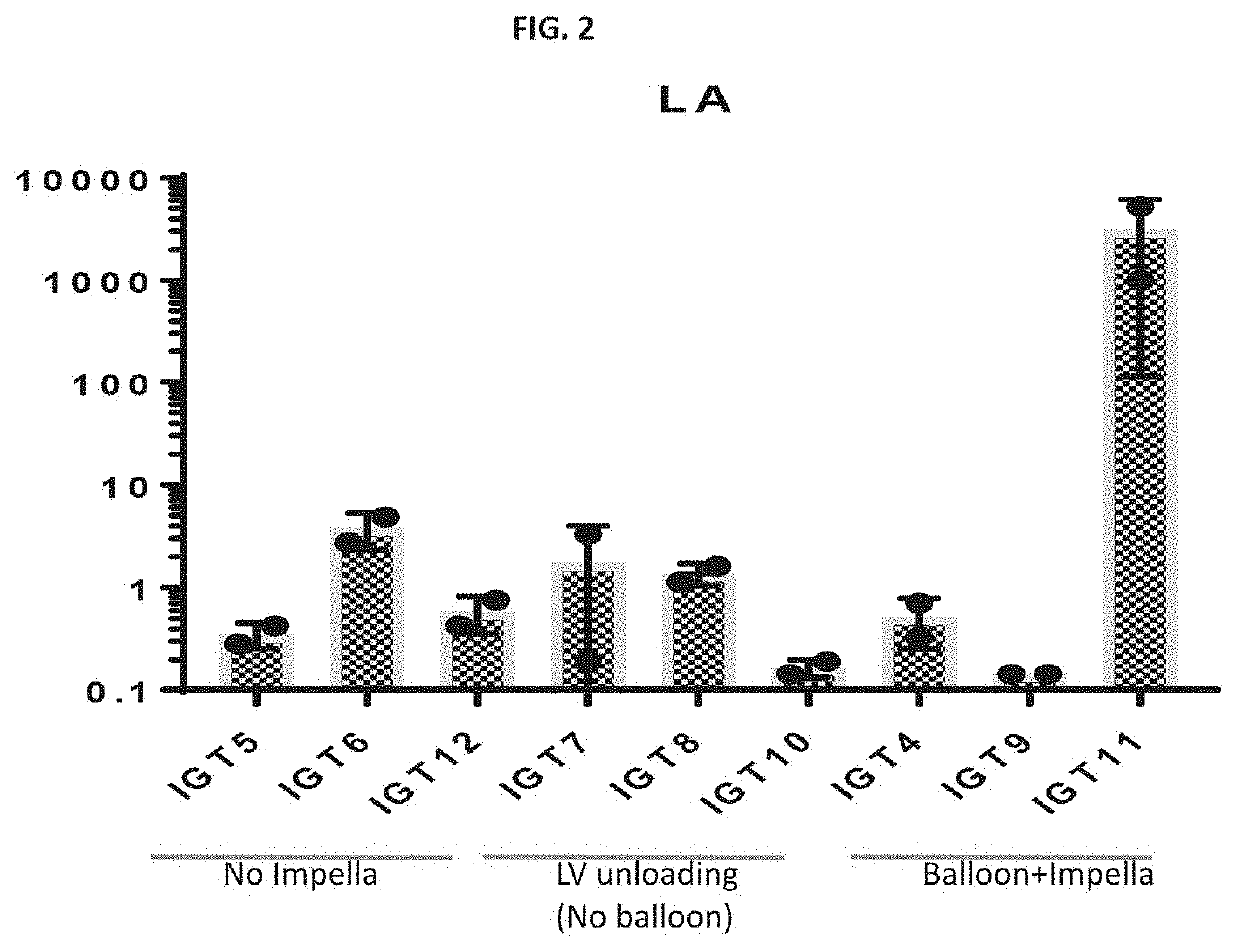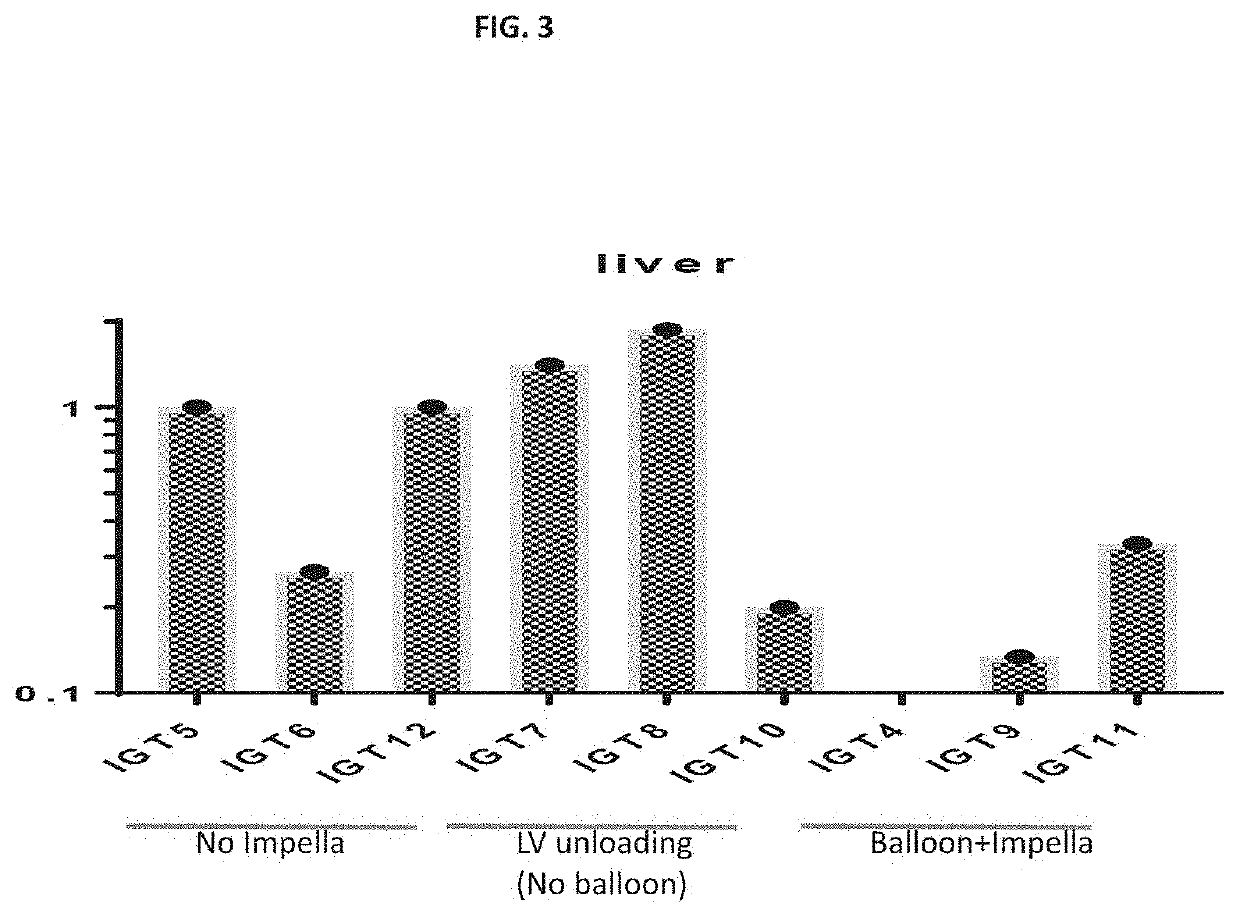Systems and methods for left ventricular unloading in biologic therapy or vectored gene therapy
a technology of left ventricular unloading and vector genome, which is applied in the field of systems and methods for left ventricular unloading in biologic therapy or vectored gene therapy, can solve the problems of relative inefficiency of technique, burden on healthcare around the world, and inability to achieve the desired gene expression clearance rate of the vector genome through the heart, so as to reduce the clearance rate of the vector genome and increase the uptake of biologic therapy , the effect of maintaining heart function and systemic circulation
- Summary
- Abstract
- Description
- Claims
- Application Information
AI Technical Summary
Benefits of technology
Problems solved by technology
Method used
Image
Examples
Embodiment Construction
[0019]To provide an overall understanding of the systems and methods described herein, certain illustrative implementations will be described. Although the implementations and features described herein are specifically described for use in connection with a circulatory and reperfusion therapy system, it will be understood that all the components and other features outlined below may be combined with one another in any suitable manner and may be adapted and applied to other types of circulatory therapy and reperfusion therapy devices.
[0020]As noted above, in one embodiment a gene therapy vector is introduced into an occluded vessel of a mechanically supported heart. FIGS. 1-6 illustrate results obtained in a gene therapy vector study performed on pigs. For a first control group of pigs. Pigs in the study were numbered-pig 5 being referred to as IGT5, pig 6 being referred to as IGT6, etc. Three groups of pigs were considered. In a first control group of pigs (“Group 1”), an adeno-asso...
PUM
| Property | Measurement | Unit |
|---|---|---|
| longitudinal length | aaaaa | aaaaa |
| time | aaaaa | aaaaa |
| deposition | aaaaa | aaaaa |
Abstract
Description
Claims
Application Information
 Login to View More
Login to View More - R&D
- Intellectual Property
- Life Sciences
- Materials
- Tech Scout
- Unparalleled Data Quality
- Higher Quality Content
- 60% Fewer Hallucinations
Browse by: Latest US Patents, China's latest patents, Technical Efficacy Thesaurus, Application Domain, Technology Topic, Popular Technical Reports.
© 2025 PatSnap. All rights reserved.Legal|Privacy policy|Modern Slavery Act Transparency Statement|Sitemap|About US| Contact US: help@patsnap.com



